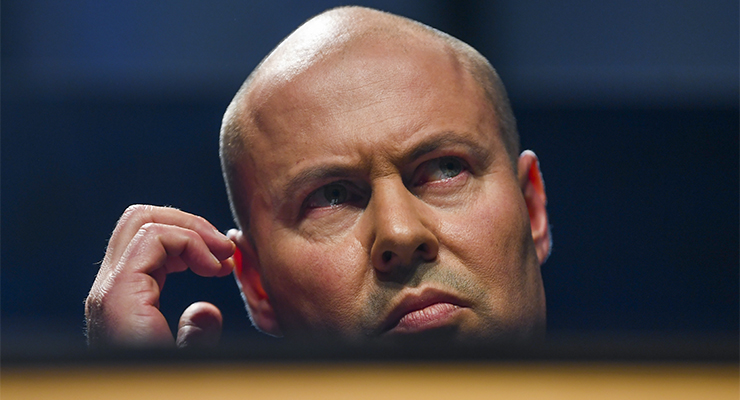
While the gallery and government combined are doing their best to keep the macro-economic settings of the federal budget at the journalistic boil, out in the real world, the big question Australians are asking about it all (according to Google Trends, at least) is: parental leave.
Morrison’s bullying fiasco, the journalistic focus on mismatched predictions of inflation and wages, and the all-too cute budget measures like the petrol excise all tell us that, as a campaigning message, the federal budget has gone bust far quicker than usual.
The disconnect between the gallery reporting and the public searching tells us a bit about the traditional news media and how far its audience has aged past parenthood, plus a lot about how much federal budgets actually matter in the sweep of Australian society. (Not much, it seems.)
Australia’s paid parental leave system (introduced by the Gillard government a decade ago) provides 18 weeks’ pay at the minimum wage for the mother and two weeks for the father. Now, in one of those blink-and-you’ll-miss-it (journalistically speaking) moments, the budget package provides these 20 weeks in total can be divided up by the parents as they see fit.
Neat policy, although it bypassed the major push by advocates to have superannuation added to the payment. But here’s the thing: it’s cost-neutral. So why is it in the budget in the first place?
It’s because Australia’s political elite — in the gallery and in the Parliament — have long convinced themselves that the annual budget is the policy pivot on which the political year turns. But as an aggregation of long-settled decisions on income and expenditure, there’s rarely much room for big-bang announcements. The result? A grab-bag of policy ideas looking for a narrative.
That narrative emerges from the rollout across budget week in a carefully curated ritual: tactical pre-budget leaks, budget-night broadcast, budget breakfast, the treasurer at the press club — even (if not for Shane Warne’s death) a rare appearance by the prime minister on the ABC’s flagship 7.30. The opposition got a look-in with the traditional budget reply on Thursday night.
Journalists like the privileged lock-up access. In the age of tariffs and excise, it was an important device to prevent leaking of market-sensitive information. Now it’s a bow to the gallery’s rights of access. It centres them in comment and analysis. Media returns the favour with (now metaphorically) acres of newsprint across all mediums.
For the government, the medium is the message: “We know what we’re doing.”
The 2016 double dissolution has structured the subsequent election timetables to give messaging around the election-year budgets a new urgency: the opportunity for the government to set the narrative on which the election can be fought.
That worked in 2019. For all the commentariat’s eye-rolling about fudged figures, “back-in-black” cut through, signifying “competence, good management”. The Morrisonian contribution to the politics of the budget — “decisions taken but not yet announced” — provided, largely unseen, a sneaky slush fund for electorate-by-electorate offerings out of the gaze of the national political media.
Now as the hoped-for budget boom seems to be busting, the government is discovering a hard truth: you can’t run the same election twice.
Still, there’s a pleasing honesty in the narrative it’s giving a test run: we value your vote, it seems to be saying, enough to be prepared to pay you for it. It may not be too disappointed in the gallery pointing to all the marginal and safe electorate funding. It may even welcome Anthony Albanese’s “they might as well staple cash to how-to-votes”.
The press gallery is heavily invested in the budget process. It’s its annual moment as well. A budget so heavily geared to the electoral moment insults its sense of budgetary propriety. It’s why this week’s reporting has been a mix of the cynical and critical.
Part of the gallery’s budget ritual is identifying the so-called “budget bounce” — the polling climax of the budget’s narrative arc. The smallest of deviations in post-budget polls is turned to serve the “bounce” narrative, although political scientists and psephologists are more sceptical.
The big part of the “bounce” story? Guessing how The Australian will report whatever turns up in its own Newspoll results. You don’t have to trust polls to want to see that.








Crikey is committed to hosting lively discussions. Help us keep the conversation useful, interesting and welcoming. We aim to publish comments quickly in the interest of promoting robust conversation, but we’re a small team and we deploy filters to protect against legal risk. Occasionally your comment may be held up while we review, but we’re working as fast as we can to keep the conversation rolling.
The Crikey comment section is members-only content. Please subscribe to leave a comment.
The Crikey comment section is members-only content. Please login to leave a comment.